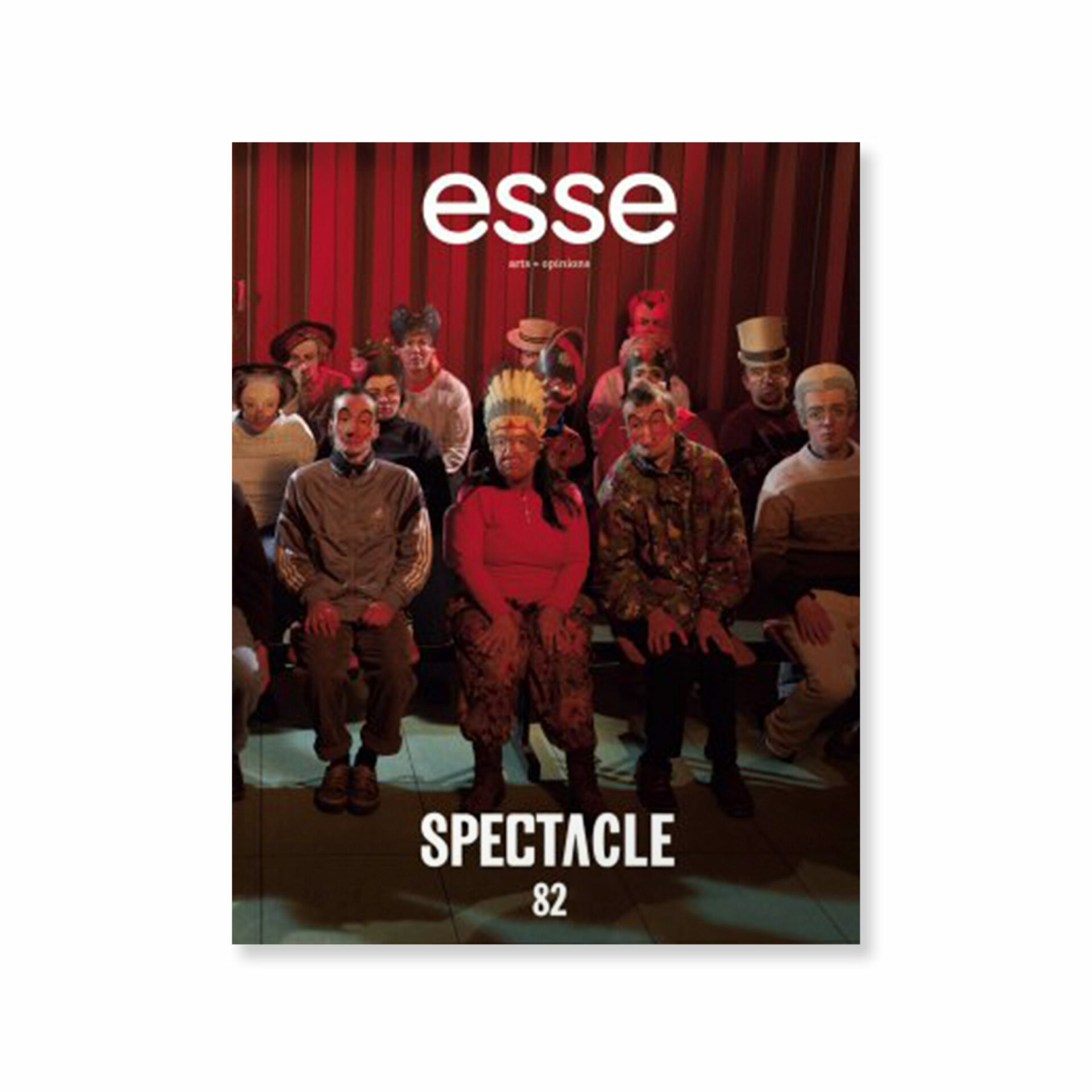When contemporary artworks are characterized as “spectacular,” it is usually meant in a critical, negatively connoted sense. In this context the term “spectacle” in general is mentioned in the same breath with the name of Guy Debord, whose understanding of this concept seems to have become a universal definition of “spectacularity” when used in relation to an aesthetic category in art history and critique. In his famous publication La societé du spectacle from 1967, Debord describes the spectacle as a deceptive and illusive mechanism devoid of any meaning, the only purpose being to benumb and stupefy the crowd, who will end up paralyzed and incapable of any active or critical mode of thinking or action. The spectacle is understood to preclude the direct and immediate experience of reality and instead gives way to the representation of a mere “pseudo-world” that can be experienced only in a mediated and distanced way and replaces all kinds of authentic social relationships.1 1 - Guy Debord, The Society of the Spectacle (New York: Zone Books, 1994), 12. In the tradition of Marxist theories the potential of the spectacle as an instrument that creates collectivity, commitment, and community is negated by Debord to function only by illusion and false consciousness. Thereby it represents the sheer opposite of communication and cultural exchange. Finally, the spectacle is condemned to lead to the separation and alienation of the members of public society, who end up being a passively consuming audience, irreversibly isolated from each other and without any capacity to respond and react to, or even change, its monolithic relationship towards reality.

Isola bella, video stills, 2007-2008.
Photos: © Danica Dakić / SODRAC (2014), courtesy of the artist
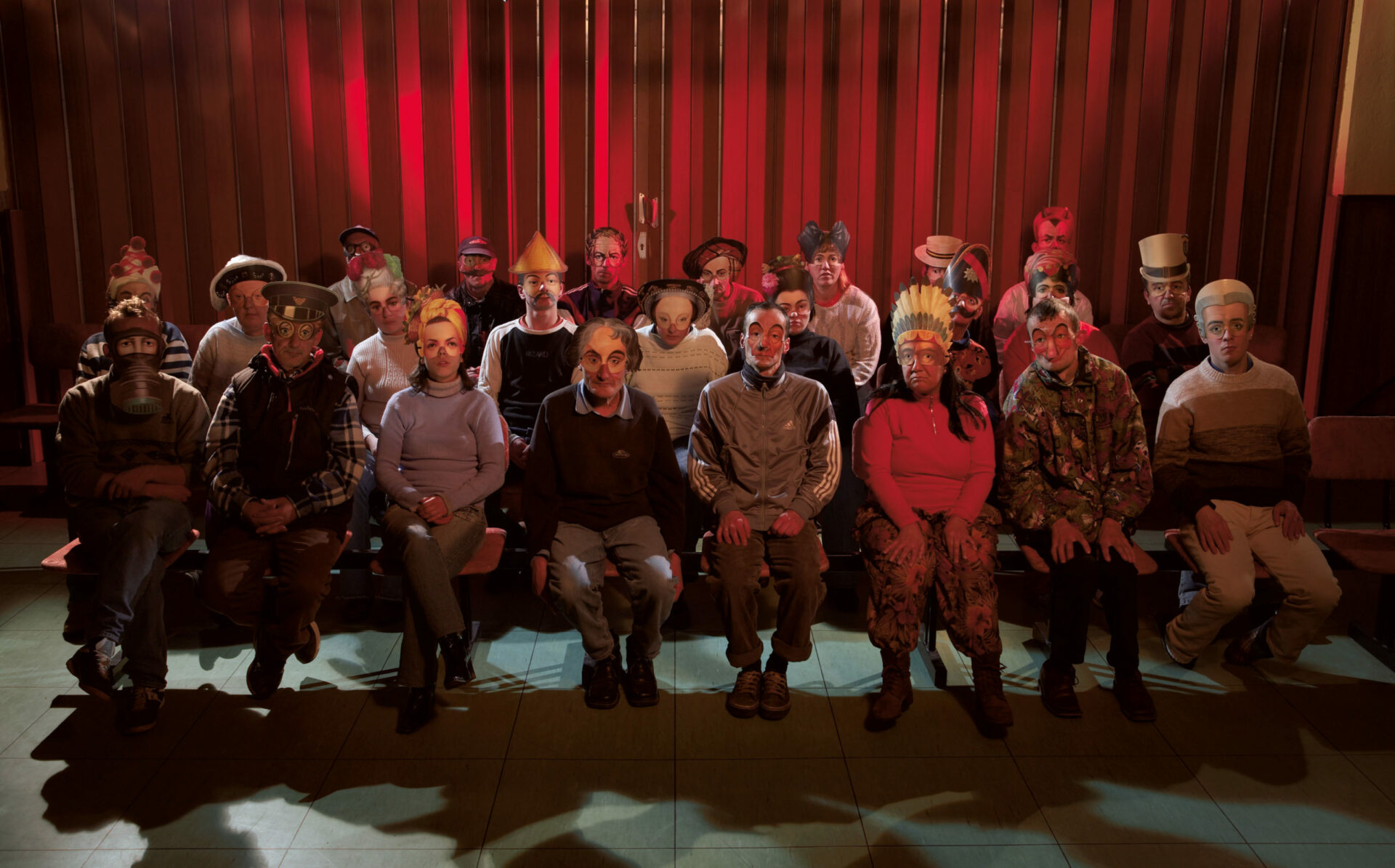
What is often ignored or inadequately differentiated in the synonymous usage of Debord’s concept of the spectacle is the fact that he developed it very specifically to describe the capitalistic society of his time and not to define the term in a common and universal sense. He thus uses it as a metaphor to determine a concrete relationship between visual culture, economy, and politics, whose beginnings he has located in the late 1920s.2 2 - In his Commentaires sur la société du spectacle (1988) Debord specifies that the society of the spectacle had reached the age of forty when his book appeared in 1967. See Jonathan Crary, “Spectacle, Attention, Counter-Memory,” in October 50 (Fall 1989): 97–107. In his descriptions of the spectacle as, for example, a “social relation among people, mediated by images” and “a tendency to make one see the world by means of various specialized mediations”3 3 - Guy Debord, The Society of the Spectacle (Detroit: Black & Red, 1977). one can, however, find more neutral and general definitions of the term, preceding its usage as a critical category to differentiate high and low forms of art and culture.

They Shoot Horses, video stills, 2004.
Photos: courtesy of Shady Lane Productions, Berlin

Furthermore it has to be said that Debord’s assumption of a binary between “real” or “authentic” ways of experiencing and social communication beyond all need of intermediation, in contrast to the inauthenticity and illusion of those ways that depend on mediation and representation, might even have contributed to the stability and affirmative discourse of the structures it criticizes. As Juliane Rebentisch has pointed out, such a critique of the spectacle seems out-of-time nowadays in a double sense: “It participates in the per se problematic utopia of social authenticity, without noticing that its central motives have been appropriated by the opposite side in the meantime.”4 4 - Juliane Rebentisch, “Spektakel,” in Texte zur Kunst 66 (June 2007), 121. (Translation from German by the author.) Rebentisch also criticizes the quasi-unquestioned use of the catchphrase “spectacle” as a synonym for a culturally pessimistic and neo-Marxist view in contemporary art theory. What if, on the other hand, one could find a different usage and understanding of spectacularity as a specific mode of mediation, communication, and representation, which is also linked to a special form of reception and aesthetic experience, that is not opposite to art but one of its possible ways of expression? When it comes to contemporary participatory art, it seems quite appropriate to analyze works, such as those of Phil Collins, Danica Dakić, Omer Fast, Aernout Mik, or Gillian Wearing, in terms of spectacularity, theatricality, artificiality, and even pleasure or entertainment, without calling into question their critical potential at the same moment. For that matter, it is necessary to clarify and review the term of the spectacle to make it fruitful for a contemporary usage.
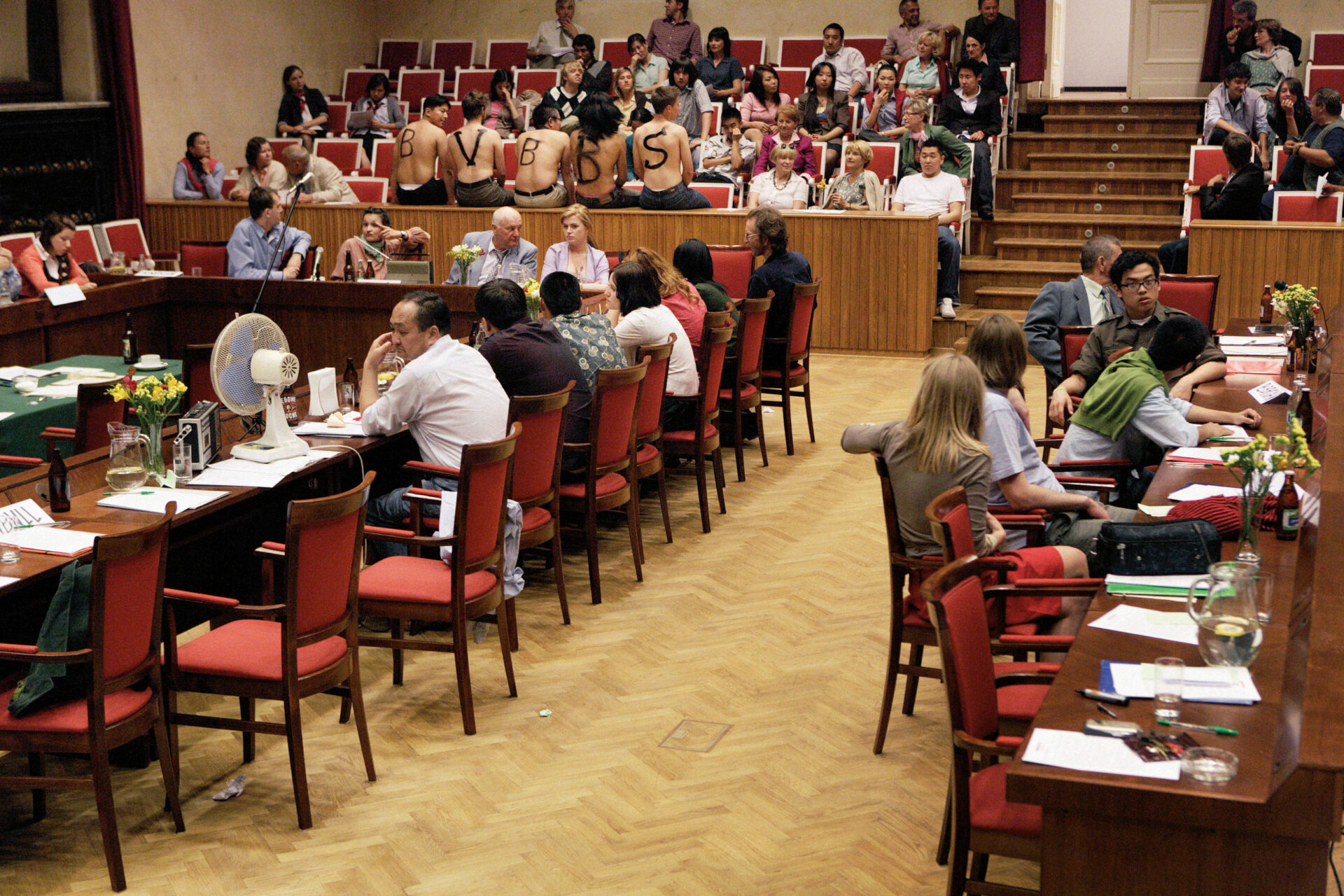
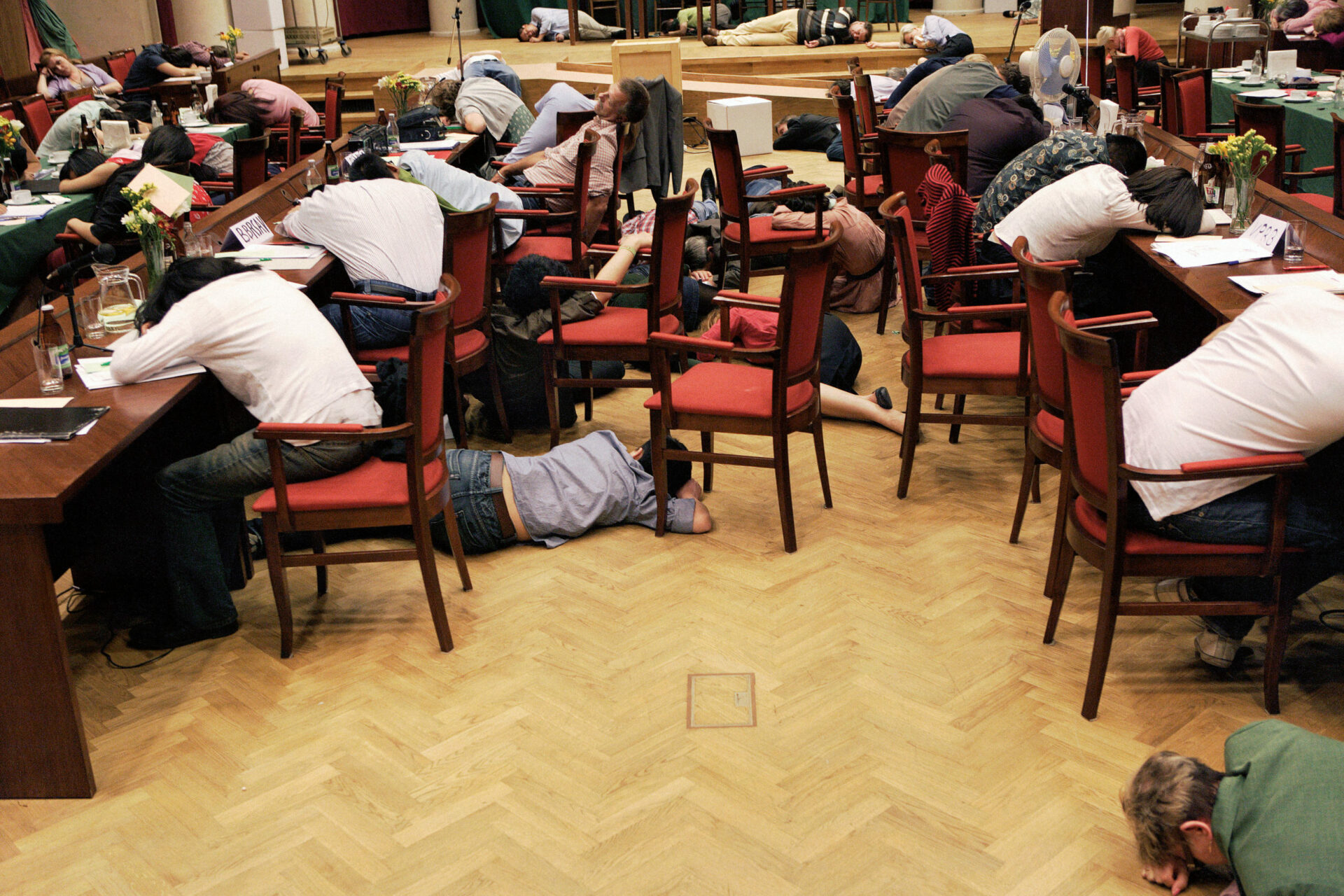
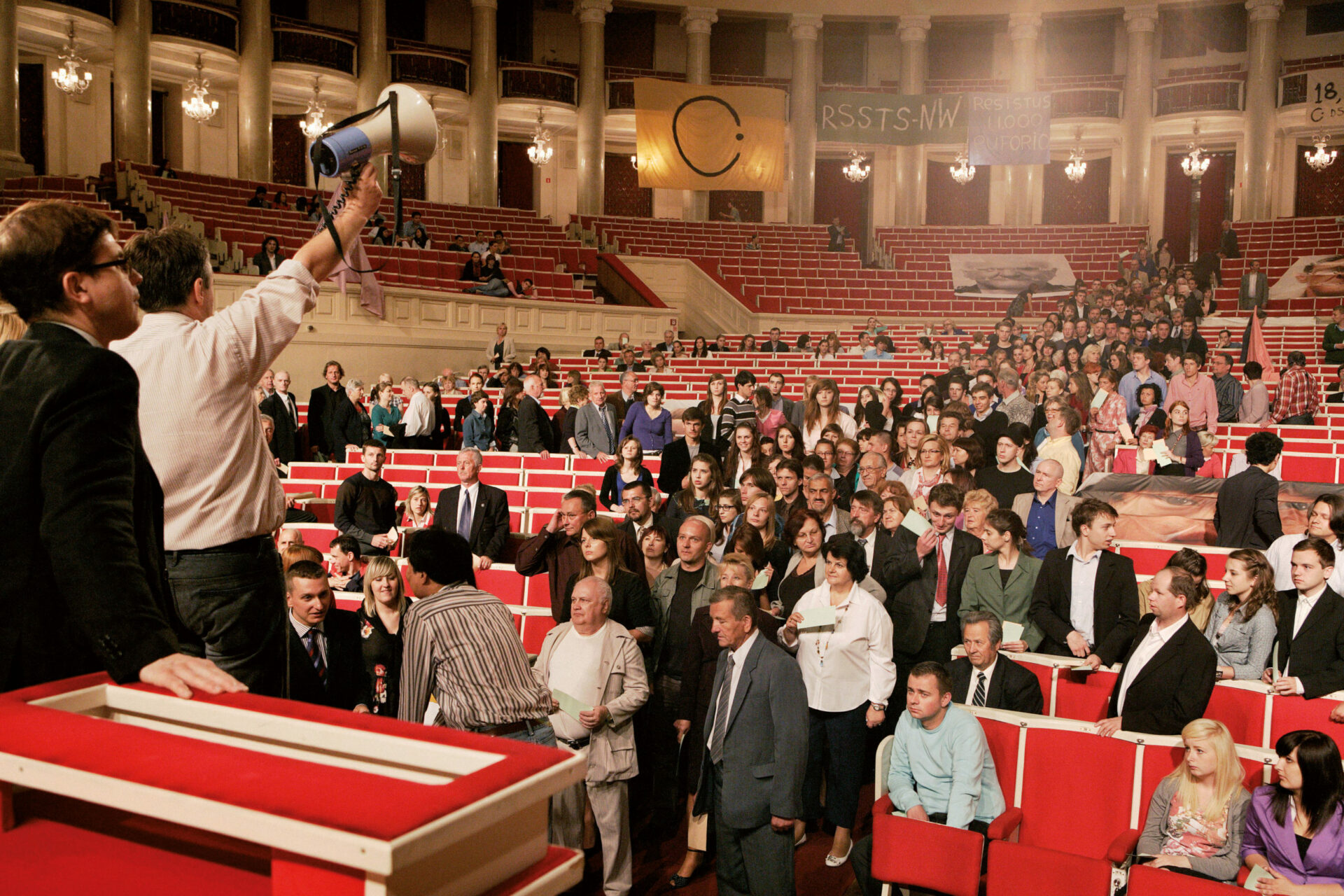
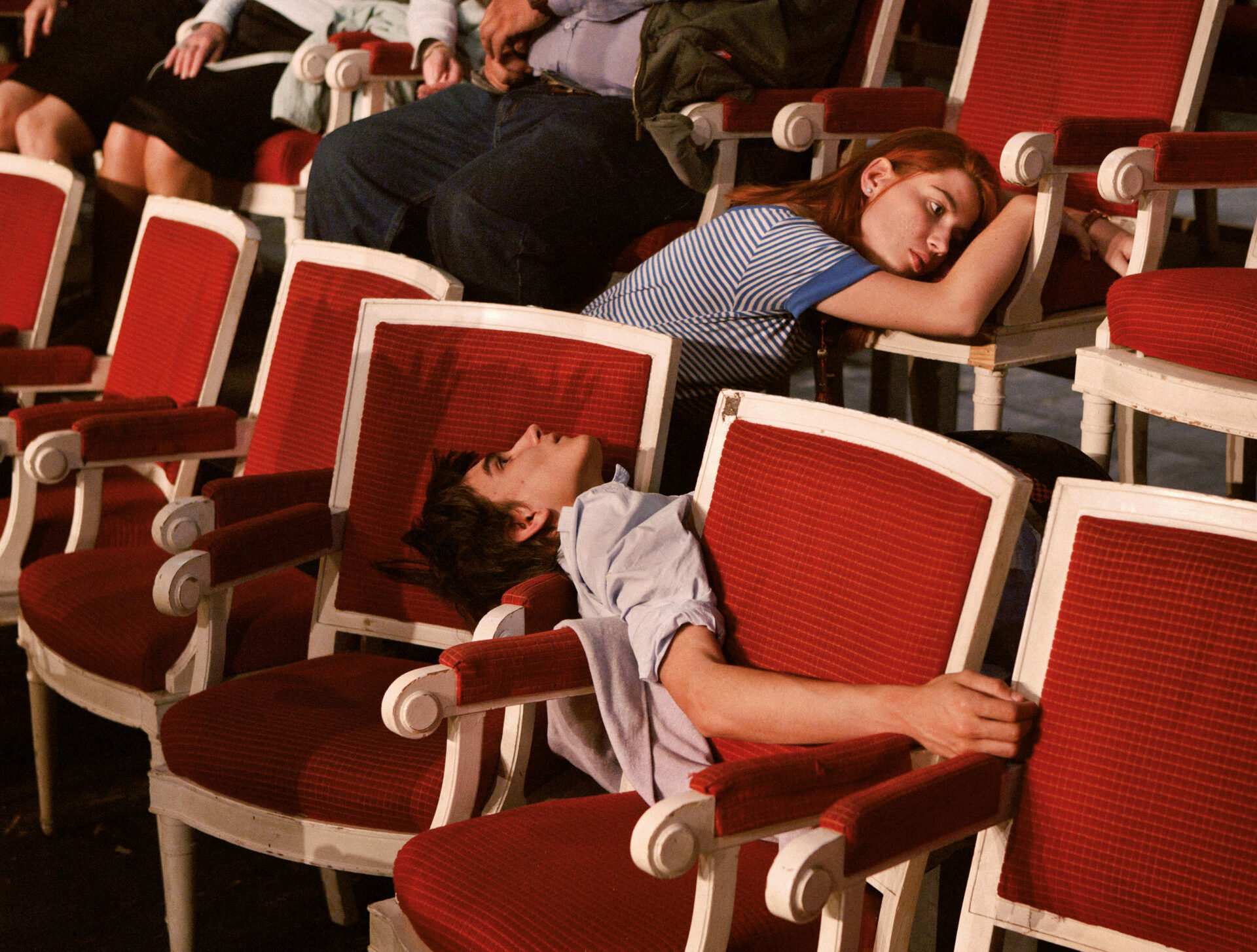
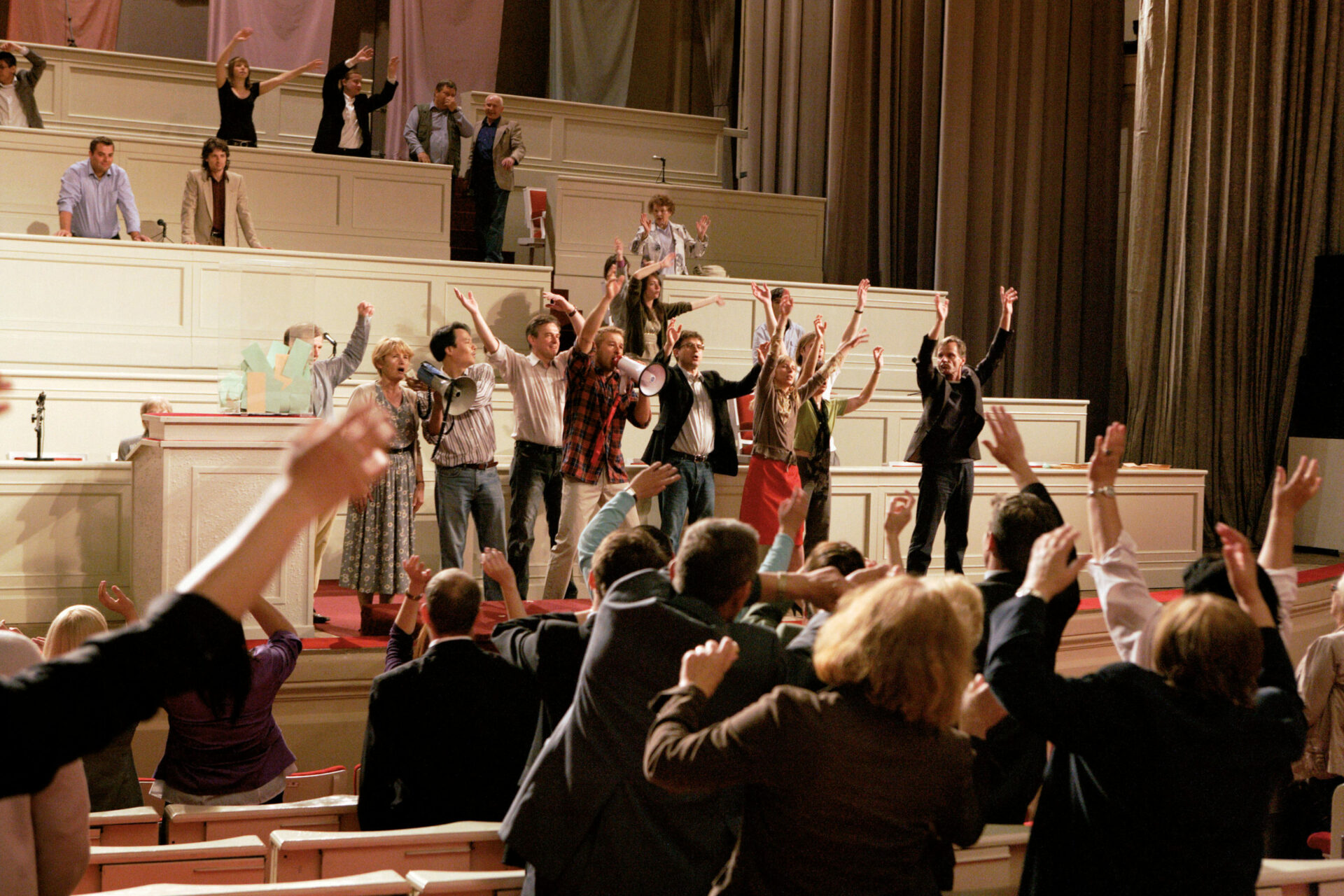
Communitas, 2010.
Photos: Florian Braun, courtesy of the artist & carlier | gebauer, Berlin

Critiques of the spectacle mostly aim at the reasons people are at all interested in its reception. The beholder might view it because of its capacity to produce affects, emotions, and bodily sensations rather than knowledge or insights.5 5 - Elizabeth Cowie, “Identifizierung mit dem Realen — Spektakel der Realität,” in Marie-Luise Angerer and Henry P. Krips, eds., Der andere Schauplatz. Psychoanalyse. Kultur. Medien (Vienna: Turia + Kant, 2001), 159. Looking at historical or more general definitions of the “spectacular” in English, French, or German dictionaries, one can sum up the generation of ambivalent emotions and affects by especially amazing, curious, amusing, extraordinary, or even unsettling action as the central common denominator. The spectacle is thus described for example as: “A specially prepared or arranged display of a more or less public nature . . . forming an impressive or interesting show or entertainment for those viewing it.”6 6 - The Oxford English Dictionary, Vol. XVI (Oxford 1989), entries: spectacle, spectate, spectator, col. 164–66. Or in French: “Ce qui se présente au regard, à l’attention, et qui est capable d’éveiller un sentiment . . . ce qui frappe l’imagination, de ce qui provoque la surprise, l’intérêt”.7 7 - Grande Larousse de la langue française, Vol. 6 (Paris 1977), entries: spectacle, spectaculaire, spectateur, col. 5673. And in German: “ein aufsehen erregender vorfall [an incident that causes sensation].”8 8 - Deutsches Wörterbuch von Jacob und Wilhelm Grimm, Vol. 10 (Leipzig 1905), entries: spektakel, spektakelhaft, spektakelmäszig, spektakeln, col. 2131–34. (Translation from German by the author.) A distinctive mark in that context is that the affective character of the observed might unload vocal and gestic reactions as well as emotional releases like astonishment, surprise, enthusiasm, or sorrow that are related to the production of collective sound and noise, in contrast with “serious” forms of performances — usually received in silence — while the thoughts and processions stay in the heads of each single member in the audience. Furthermore, all those specifications emphasize the distance of the audience or spectator, who must nevertheless be bodily present at the spectacular event, allowing a special kind of participation by reception and observation. She or he is thus related in a specific social and real-time constellation to the spectacular object or person.

Trauma, video still, 2000.
Photo: © Gillian Wearing, courtesy of Maureen Paley, London
The fact that a spectacle is always bound to mediation and representation, which causes strong affects and ambivalent emotions, doesn’t necessarily mean that its reception must occur in an unreflective and blunt way. On the contrary, concepts like Walter Benjamin’s Zerstreuung [dispersion], as a special mode of tactile, immersive, and collective reception in opposition to the concentrated, distanced, and individual contemplation of art can be helpful in understanding the spectacle as it is paradigmatically represented for Benjamin in the medium of the cinema. He is thus emphasizing its potential to let critique and enjoyment or reflection and affection fall into one mode of reception.9 9 - Walter Benjamin, Das Kunstwerk im Zeitalter seiner technischen Reproduzierbarkeit [1936] (Frankfurt am Main: Suhrkamp, 1977), 36–41. In this context one can further draw upon more recent theories such as Jean-Luc Nancy’s description of the “spectacle of society,” focusing on the idea that presenting oneself in a mediated form before others is a fundamental condition for the functioning of community and society where everyone is co-existing whilst “being singular plural.”10 10 - Jean-Luc Nancy, Être singulier pluriel (Paris: Galilée, 1996). One could also relate here to Jacques Rancière’s political and aesthetic understanding of the “Distribution of the Sensible,” which is grounded in the ideal of “dissensus” and friction. See Jacques Rancière, Le partage du sensible: Esthétique et politique (Paris: La Fabrique, 2000).
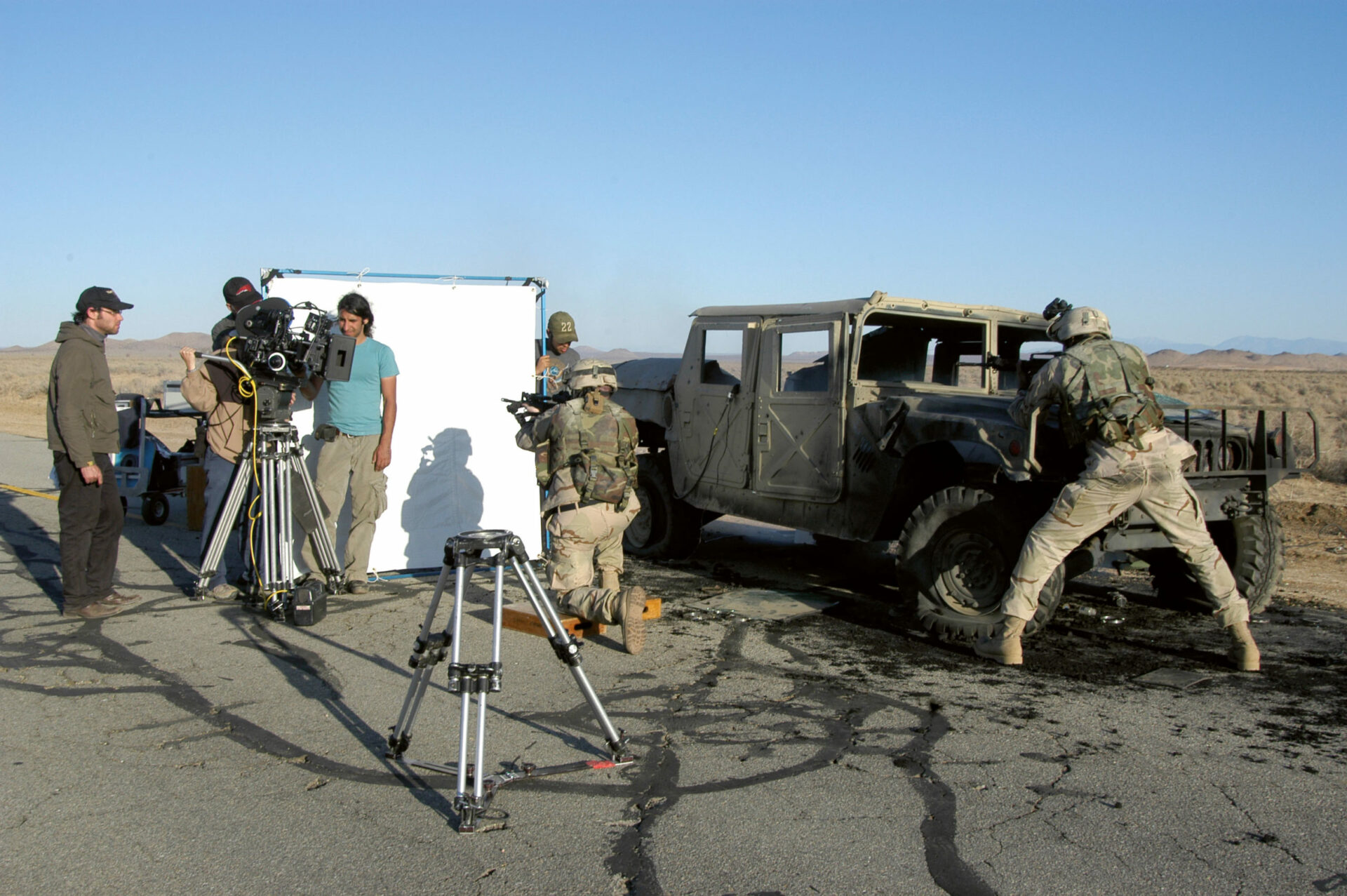
The casting, 2007.
Photo: courtesy of the artist & gb agency, Paris
Based on those and similar theories, a new understanding of the category of spectacle for the contemporary art historical discourse can be defined, which is especially useful for those artists who have chosen to appropriate the spectacular mode with the specific goal of actively using its qualities to stimulate strong affects or to draw upon the ambiguity between artificiality and authenticity in front of a camera. Danica Dakić uses, for example, the mechanisms of theatre and role-playing to find alternative forms of visibility for people with disabilities (Isola Bella, 2007–2008). With a similar approach, Phil Collins organizes a non-stop, eight-hour dance marathon, with paid young adults, to find a different way of representation for their unbearable yet sustaining situation in Palestine (They Shoot Horses, 2004). Aernout Mik engages a bulk of extras to literally bring political action and gestures onto the stage (Communitas, 2010). And Gillian Wearing and Omer Fast disrupt the idea of authentic speech and personal account in the media format of the interview when it comes to talking about traumatic and tragic events. Wearing shows that when someone is playing her- or himself, masquerade and disguise can provide a necessary and even freeing sense of protection in this context (Wearing, Trauma, 2000). And Fast makes visible that all forms of dialogical narration are, to a certain extent, the re-enactment of a rehearsed spectacle that transforms real experience and subjective emotions into observable images for a distanced spectator (Fast, The Casting, 2007). All those artists do not try to avoid the spectacle while searching for the opposite of an authentic, unmediated, and non-theatrical, respectively non-illusionary mode of representation, but rather, they use the artificiality and playfulness of spectacular staging in front of the camera to reflect on the spectacle’s own conditions and possibilities. This also applies to the reception of those artworks in the context of exhibition and museum galleries. They are all presented as video installations with the immersive and body-activating character of specially constructed displays or life-size projections, as well as ambivalent or simultaneous viewings presented on different or double-sided screens. Thus they render possible a critical mode of the spectacularity that is not based in a theoretical critique and deconstruction of the spectacle but in a critical practice that tries to unify its enchanting and diverting attractiveness with the claim and achievement of a “serious” artwork.
